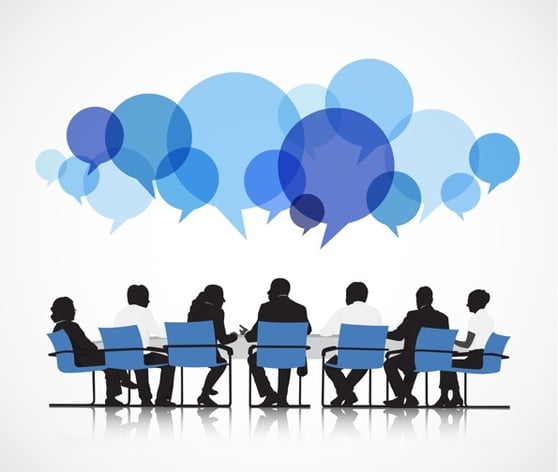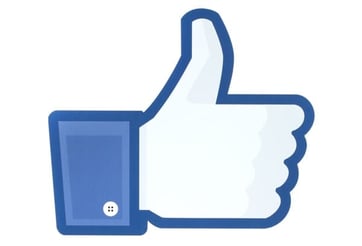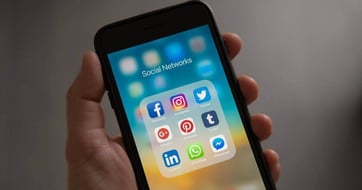If you’ve ever attended a large conference, put yourself back in that setting for a second. A few members of our team recently traveled to Boston for HubSpot’s INBOUND 2014, so the experience is fresh for us. For those who haven’t been to a conference, imagine a large venue with thousands of people traipsing to and from different rooms (and sometimes one big room all at the same time). These days, with people checking their email and messages immediately following every session, it’s a wonder there aren’t more head-on collisions in conference hallways. During INBOUND, an insightful tweeter noted that as the crowd dispersed following a big keynote presentation, he felt like he was part of a zombie horde. He’s not wrong.

Nevertheless, conferences are a great investment for the knowledge and development of you and your team. The opportunities to meet, network, and connect with potential clients and partners are invaluable. Even though it seems like I’m about to launch into the benefits of conferences, that’s a story for another day. But keep that image of thousands of people gathered in a sprawling convention center right there in your mind’s eye.
See, we’ve been known to call the social media space “one big perpetually ongoing conference, 24 hours a day 365 days a year.” Networking, connecting, doing business, and making friends - that’s what you try to accomplish whether you’re on social media or at a conference. This brings us to the real focus of this post: social relationship management.
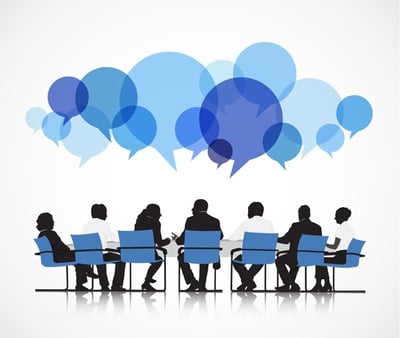
As daunting as it seems, people fly solo at conferences. Sometimes, it’s not in a company’s budget to send multiple members of a team; in other cases, there is only one team member to send. Whatever the reason, these lone wolves are left to meet, schmooze and network all by themselves. It’s a hard task, and there’s no doubt that it’s easier to attack a conference as a team. For example, if you attend a conference with three other people, two can take notes on various sessions, one can handle pre-scheduled private meetings and functions, and the last person can make it their sole goal to meet as many people as possible.

Now, back to social relationship management. Some companies designate one person as their “social media gal” and she’s responsible for creating and maintaining the brand’s Facebook, Twitter, Google+, LinkedIn, Pinterest, and any other social account. Like flying solo at a conference, it’s possible but potentially overwhelming and inefficient. If you treat the social media realm like a real-world conference where you always have access to current and potential clients and partners, it makes sense to execute any strategy as a team.
As we discussed splitting up conference responsibilities by going to sessions, holding meetings, and making connections, we can do something similar with social media tasks. If you’ve got three people on your marketing team, maybe you can be the high-level strategy manager while one person handles daily tweets, one responds to customers and complaints, and the last person runs special creative campaigns. The way you divvy up social media relationship responsibilities matters less than the fact that you are actually splitting up the tasks. In addition to lightening the load of each member of your team, you’re also making your social profiles more vibrant, efficient, and responsive. And rather than being overwhelmed with just getting things done, your team will take a more active approach to define and deliver your company’s social personality.
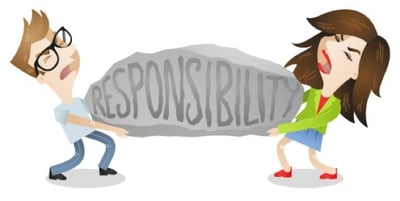
Another thing that will happen once you start sharing the blessing and the burden of social media relationship management is that your customers, followers, and advocates will take notice. With each member of your team handling a specific area of social media with more purpose and efficiency, the value of your presence and what you have to say will go up. When this happens, your followers will start to engage with and mention you just a little more often (which goes a longer way than you might think).
Let’s take the simple act of responding to positive social mentions with a “thank you” message. It could even be as simple as a customer commenting, “Great product and service, we love what you’re doing!” and you respond with, “Thanks, we appreciate it. You rock, too!” It sounds too easy to be true, but since this is so rare in the social business world, it will delight your customers. Especially if you can stick to doing it every single time. Internally, saying “thank you” is an energizing and inspiring thing, even more so when you do it a few times a day. Think about it: it’s almost impossible to feel sad, stressed, or overwhelmed when you’re saying "thank you" (thanks to Dave Kerpen from Likeable Local for that one – see, it really works)! Dave actually advocates sending handwritten "thank you" notes every day, but we think the principle applies to the social world too.

But, you’re thinking, what tools do I need for social relationship management? Like the lone wolf at a conference, it can be done without tools, but there are easier ways. At WSI, we use Hootsuite (a company we would recommend even if we weren’t partners). Hootsuite is a huge time saver for our team, and it also enables us to manage our social media profiles from a central, easy-access location. We can edit, create, approve, respond and generate analytics on all major social platforms. It’s a no-brainer for us.
Social media is a newfangled technology, but great marketers are realizing the key to success is making it more about humans than technology. Thinking about social media’s vastness as a gargantuan conference – an even bigger one than INBOUND 2014 – is a great way to humanize it. Social relationship management is something your team can tackle together to become more efficient, generate better results and provide higher value to your customers, followers, and advocates.

